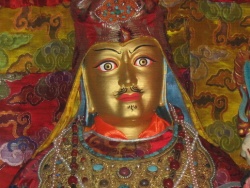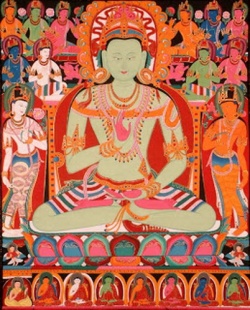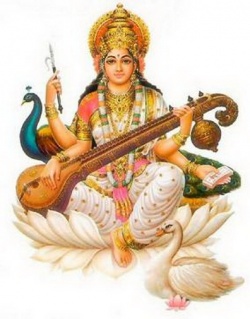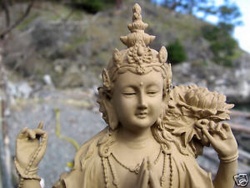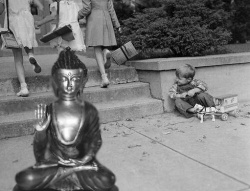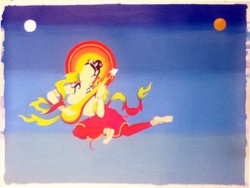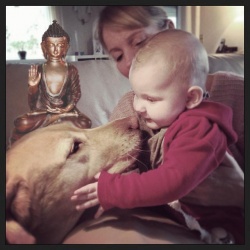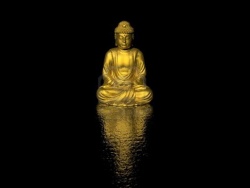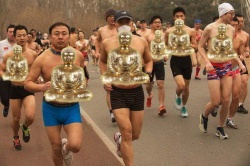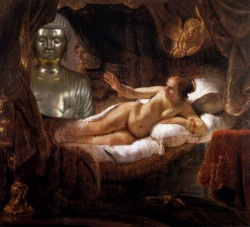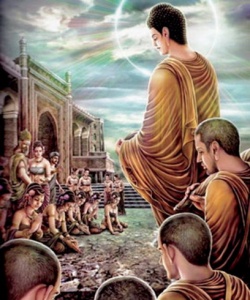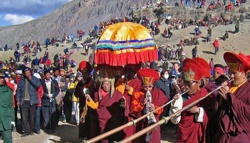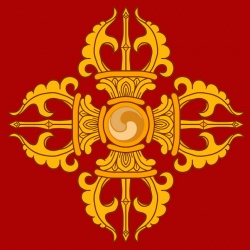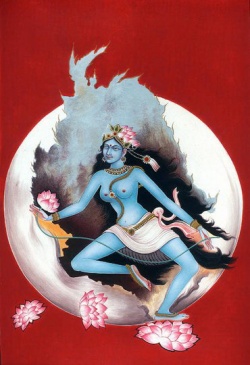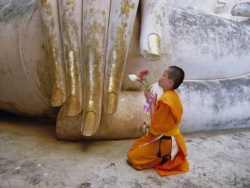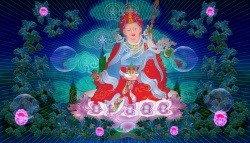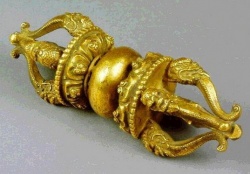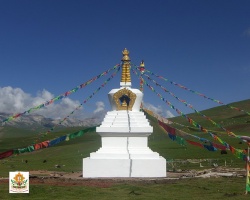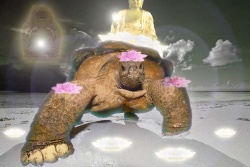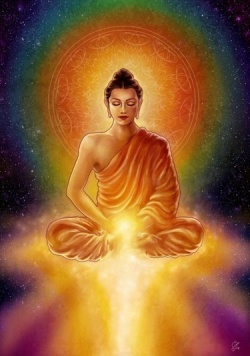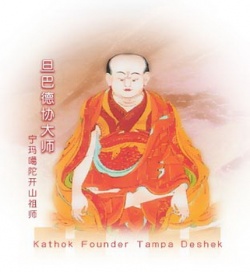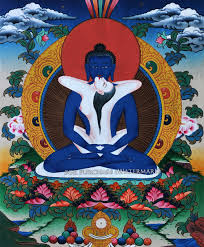Difference between revisions of "Kathok"
m (Text replacement - "[[[" to "([[") |
|||
| Line 8: | Line 8: | ||
<poem> | <poem> | ||
| − | In the [[Nyingma Tradition]], there are [[six principal Nyingma monasteries]]: | + | ==In the [[Nyingma Tradition]], there are [[six principal Nyingma monasteries]]:== |
| − | 1 [[Kathok Monastery]] | + | 1 [[Kathok Monastery]] |
| + | |||
2 [[Palyul Monastery]] | 2 [[Palyul Monastery]] | ||
| + | |||
3 [[Dzogchen Monastery]] | 3 [[Dzogchen Monastery]] | ||
| + | |||
4 [[Shechen Monastery]] | 4 [[Shechen Monastery]] | ||
| + | |||
5 [[Mindroling Monastery]] | 5 [[Mindroling Monastery]] | ||
| + | |||
6 [[Dorje Drak Monastery]] | 6 [[Dorje Drak Monastery]] | ||
| Line 24: | Line 29: | ||
==[[Great Kat'hok Dorje Den]]== | ==[[Great Kat'hok Dorje Den]]== | ||
| − | Location | + | ==Location== |
| + | |||
The main [[monastery]] of [[Kat'hok]] is located in the [[Si Chuan Province]], [[White Jade County]] - [[Ho Po region]] ([[Derge]]), a [[pure land]] where all the [[people]] embrace the Teachings of [[Lord Buddha]]. The [[monastery]] is situated at the middle of the [[Bai Long Gou]] (White [[Dragon Channel]]) on [[Do-Nian Mountain]]. | The main [[monastery]] of [[Kat'hok]] is located in the [[Si Chuan Province]], [[White Jade County]] - [[Ho Po region]] ([[Derge]]), a [[pure land]] where all the [[people]] embrace the Teachings of [[Lord Buddha]]. The [[monastery]] is situated at the middle of the [[Bai Long Gou]] (White [[Dragon Channel]]) on [[Do-Nian Mountain]]. | ||
| + | |||
It was found by the great [[Nyingma Master]] [[Tampa Deshek]] in Year 1159. | It was found by the great [[Nyingma Master]] [[Tampa Deshek]] in Year 1159. | ||
[[File:X- Tummo.jpg|thumb|250px|]] | [[File:X- Tummo.jpg|thumb|250px|]] | ||
| + | |||
The full [[name]] of the [[monastery]] is [[Kat'hok Dorje Den]] ([[Ga Tuo Duo Ji Dan]]) named so because the [[monastery]] is built on top of a naturally-arisen "Ga" [[letter]] on a huge and smooth white-coloured stone. | The full [[name]] of the [[monastery]] is [[Kat'hok Dorje Den]] ([[Ga Tuo Duo Ji Dan]]) named so because the [[monastery]] is built on top of a naturally-arisen "Ga" [[letter]] on a huge and smooth white-coloured stone. | ||
"[[Dorje Den]]" in [[Tibetan]] means "[[Vajra Seat]]", [[Vajrasana]] the holiest place for [[Buddhists]] all over the [[world]], the very place where [[Lord Buddha]] [[manifested]] the Great [[Enlightenment]]. | "[[Dorje Den]]" in [[Tibetan]] means "[[Vajra Seat]]", [[Vajrasana]] the holiest place for [[Buddhists]] all over the [[world]], the very place where [[Lord Buddha]] [[manifested]] the Great [[Enlightenment]]. | ||
| + | |||
Great [[Guru Padmasambhava]] declared that the [[blessings]] of [[Kat'hok]] would reign supreme and is {{Wiki|equivalent}} to that of the [[Vajra Seat]] in [[Bodhgaya]] on which [[Lord Buddha]] [[attained]] [[Enlightenment]]. | Great [[Guru Padmasambhava]] declared that the [[blessings]] of [[Kat'hok]] would reign supreme and is {{Wiki|equivalent}} to that of the [[Vajra Seat]] in [[Bodhgaya]] on which [[Lord Buddha]] [[attained]] [[Enlightenment]]. | ||
| + | |||
[[Guru Rinpoche]] personally [[consecrated]] [[Kat'hok Monastery]] 13 times and prophesied [[Kathok]] to be The [[Supreme Holy Place of the Snowy Lands]], The [[Ultimate]] Source for the Dissemination of the [[Vajrayana Teachings]] of the Great [[Dakini]] [[Yeshe Tsogyal]]. | [[Guru Rinpoche]] personally [[consecrated]] [[Kat'hok Monastery]] 13 times and prophesied [[Kathok]] to be The [[Supreme Holy Place of the Snowy Lands]], The [[Ultimate]] Source for the Dissemination of the [[Vajrayana Teachings]] of the Great [[Dakini]] [[Yeshe Tsogyal]]. | ||
| Line 40: | Line 50: | ||
| − | 100,000 [[Rainbows]] of [[Kat'hok]] | + | ==100,000 [[Rainbows]] of [[Kat'hok]]== |
| Line 55: | Line 65: | ||
The [[Kat'hok Nyingma Lineage]] is analogous to the [[essence]] of the most refined {{Wiki|gold}}. In the centuries of [[Kat'hok's history]], there have been a total of 123 accomplished [[masters]] from the [[time]] of the [[Kat'hok Great]] founder [[Tampa Deshek]] to: | The [[Kat'hok Nyingma Lineage]] is analogous to the [[essence]] of the most refined {{Wiki|gold}}. In the centuries of [[Kat'hok's history]], there have been a total of 123 accomplished [[masters]] from the [[time]] of the [[Kat'hok Great]] founder [[Tampa Deshek]] to: | ||
[[File:01a.jpg|thumb|250px|]] | [[File:01a.jpg|thumb|250px|]] | ||
| + | |||
| + | |||
the [[80th Throne-holder Kat'hok Tai Situ Chokyi Gyaltsen Rinpoche]], [[Situ Rinpoche's]] students, include the great [[Khenpo Lei Xia Deng]], [[Jamyang Khyentse Chokyi Lodro Rinpoche]], [[Geze Rinpoche]], [[Deng Be Namjia Rinpoche]], great [[Khenpo Gyaltsen Ozer]] and other great [[masters]]. | the [[80th Throne-holder Kat'hok Tai Situ Chokyi Gyaltsen Rinpoche]], [[Situ Rinpoche's]] students, include the great [[Khenpo Lei Xia Deng]], [[Jamyang Khyentse Chokyi Lodro Rinpoche]], [[Geze Rinpoche]], [[Deng Be Namjia Rinpoche]], great [[Khenpo Gyaltsen Ozer]] and other great [[masters]]. | ||
| + | |||
From the great [[Khenpo Gyaltsen Ozer Rinpoche]], the {{Wiki|Holy}} [[Throne-holder of Kat'hok]] was passed on to [[Mocha Rinpoche]] and [[Dimed Shing Kyong Rinpoche]], the [[83rd Throne-holder of Kat'hok]]. | From the great [[Khenpo Gyaltsen Ozer Rinpoche]], the {{Wiki|Holy}} [[Throne-holder of Kat'hok]] was passed on to [[Mocha Rinpoche]] and [[Dimed Shing Kyong Rinpoche]], the [[83rd Throne-holder of Kat'hok]]. | ||
| Line 62: | Line 75: | ||
Now, the glorious seat of the [[Kat'hok Nyingma Lineage]] is occupied by the H.H. [[Lhoga Rinpoche]] as the [[84th Supreme Throne-holder of Kat'hok]]. | Now, the glorious seat of the [[Kat'hok Nyingma Lineage]] is occupied by the H.H. [[Lhoga Rinpoche]] as the [[84th Supreme Throne-holder of Kat'hok]]. | ||
| − | + | ||
| + | ==H. [[Lhoga Rinpoche]] -- [[Nyingma Kat'hok 84th Lineage]] [[Throne Holder]])== | ||
| Line 75: | Line 89: | ||
However, owing to the great number of affiliated [[monasteries]] of [[Kathok]], it is virtually impossible to list out of all the great [[masters]]. | However, owing to the great number of affiliated [[monasteries]] of [[Kathok]], it is virtually impossible to list out of all the great [[masters]]. | ||
| + | |||
[[File:Padma dod.jpg|thumb|250px|]] | [[File:Padma dod.jpg|thumb|250px|]] | ||
Nevertheless, accomplished prominent [[masters]] of [[Kathok]] who propagated the [[Dharma]] overseas are as follows: | Nevertheless, accomplished prominent [[masters]] of [[Kathok]] who propagated the [[Dharma]] overseas are as follows: | ||
| − | ..[[Chatral Rinpoche]] ..[[Bairo Tulku Rinpoche]] (the younger brother of H.H. the [[Mocha Rinpoche]]; the father of the {{Wiki|present}} H.H. [[Gyalwang Drukchen Rinpoche]], the supreme head of the [[Drukpa Kagyu Tradition]]) ..[[Kathok Tai Situ Rinpoche]] ..[[Weng Chu Rinpoche]] ..[[Yanpan Sherap Gyaltsen]] ([[Karma]]) [[Rinpoche]] (the {{Wiki|present}} [[85th Kathok Lineage Throne Holder]], - previous [[life]] was [[Xire Jiangcan], one of the [[3 Immediate Enlightened]] Ones.) ..[[Chagdud Tulku Rinpoche]] .. [[Nyoshul Khen Rinpoche]] .. [[Wei Yin Tulku]] and other [[noble]] [[masters]]. | + | ..[[Chatral Rinpoche]] ..[[Bairo Tulku Rinpoche]] (the younger brother of H.H. the [[Mocha Rinpoche]]; the father of the {{Wiki|present}} H.H. [[Gyalwang Drukchen Rinpoche]], the supreme head of the [[Drukpa Kagyu Tradition]]) ..[[Kathok Tai Situ Rinpoche]] ..[[Weng Chu Rinpoche]] ..[[Yanpan Sherap Gyaltsen]] ([[Karma]]) [[Rinpoche]] (the {{Wiki|present}} [[85th Kathok Lineage Throne Holder]], - previous |
| + | |||
| + | [[life]] was [[Xire Jiangcan], one of the [[3 Immediate Enlightened]] Ones.) ..[[Chagdud Tulku Rinpoche]] .. [[Nyoshul Khen Rinpoche]] .. [[Wei Yin Tulku]] and other [[noble]] [[masters]]. | ||
| + | |||
| + | ==[[Kathok Monastery]] at {{Wiki|present}}== | ||
| − | |||
| + | For hundreds of years, the [[Kathok]] [[Nyingmapas]] had [[monasteries]] all over [[Tibet]], [[Bhutan]], [[India]], [[Sikkim]], [[Mongolia]] as well as [[China]]. During the {{Wiki|ancient}} times, there were over 300 [[monasteries]] but many were [[in ruins]]. However, thanks to diligent reconstruction efforts in recent years, there are now a total of 130 [[monasteries]] still [[existing]]. The great | ||
| − | + | [[Khenpo Gyaltsen Ozer]]; [[Mocha Rinpoche]]; [[Kyong Jung Rinpoche]] as well as [[H.H. Lhoga Rinpoche]] have been incessantly working hard to revive the once extremely vibrant [[Kathok Tradition]]. They are rebuilding many [[Kathok]] {{Wiki|holy}} [[temples]], [[monasteries]], [[Buddhist]] {{Wiki|colleges}} and [[meditation]] [[retreat]] centers. | |
| Line 93: | Line 112: | ||
H.H. [[Kyong Jung Rinpoche]] One of the greatest [[masters]] in the [[Kat'hog lineage]] | H.H. [[Kyong Jung Rinpoche]] One of the greatest [[masters]] in the [[Kat'hog lineage]] | ||
[[File:Images-adi.jpg|thumb|250px|]] | [[File:Images-adi.jpg|thumb|250px|]] | ||
| + | |||
| + | |||
The [[Kathok Buddhist University]] is the [[highest]] institution of {{Wiki|learning}} in the [[Kat'hok Nyingma Tradition]]. The entire course stretches for a period of 5 years. [[Monks]] who aspire to continue their studies at [[Kat'hok Buddhist University]] have to first graduate from their [[own]] local [[Buddhist]] {{Wiki|institutions}} before they are allowed to pursue their post-graduate studies at [[Kathok]] [[Buddhist]] {{Wiki|University}}. | The [[Kathok Buddhist University]] is the [[highest]] institution of {{Wiki|learning}} in the [[Kat'hok Nyingma Tradition]]. The entire course stretches for a period of 5 years. [[Monks]] who aspire to continue their studies at [[Kat'hok Buddhist University]] have to first graduate from their [[own]] local [[Buddhist]] {{Wiki|institutions}} before they are allowed to pursue their post-graduate studies at [[Kathok]] [[Buddhist]] {{Wiki|University}}. | ||
| + | |||
{{BigTibetan|[[ཀཿཐོག་དགོན་པ་]]}} | {{BigTibetan|[[ཀཿཐོག་དགོན་པ་]]}} | ||
| Line 101: | Line 123: | ||
[[ka: thog rdo rje ldan]] | [[ka: thog rdo rje ldan]] | ||
| − | + | ||
| + | ==[[Lineage Masters]]== | ||
| + | |||
[[Dampa Deshek]], [[Sherap Senge]] ([[dam pa bde gshegs shes rab seng ge]]) founder of [[Kathok]]: 1122-1192 | [[Dampa Deshek]], [[Sherap Senge]] ([[dam pa bde gshegs shes rab seng ge]]) founder of [[Kathok]]: 1122-1192 | ||
| Line 118: | Line 142: | ||
[[Pubor Khedrub Jnanaketu]] | [[Pubor Khedrub Jnanaketu]] | ||
[[File:Katok-01.jpg|thumb|250px|]] | [[File:Katok-01.jpg|thumb|250px|]] | ||
| − | + | ||
| + | ==see also: [[ka thog bla rabs bcu gsum]]== | ||
| Line 128: | Line 153: | ||
[[Katok Moktsa Rinpoche]] | [[Katok Moktsa Rinpoche]] | ||
[[Kathok Gyaltsap Rinpoche]] | [[Kathok Gyaltsap Rinpoche]] | ||
| + | |||
==[[Current Lineage Holders]]== | ==[[Current Lineage Holders]]== | ||
| + | |||
[[Kathok Lhoga Rinpoche]] | [[Kathok Lhoga Rinpoche]] | ||
| Line 145: | Line 172: | ||
[[Longsal Nyingpo]] | [[Longsal Nyingpo]] | ||
| − | Affiliate [[Monasteries]] & [[Retreats]] | + | |
| + | ==Affiliate [[Monasteries]] & [[Retreats]]== | ||
| + | |||
[[Kham Tagtsang]] ([[khams stag tshang]]) | [[Kham Tagtsang]] ([[khams stag tshang]]) | ||
[[Kathok]] [[Mardo]] [[Tashi Choling]] | [[Kathok]] [[Mardo]] [[Tashi Choling]] | ||
| − | Alternative Names & Spellings | + | |
| + | ==Alternative Names & Spellings== | ||
| + | |||
{{BigTibetan|[[ཀ་ཐོག་དགོན་པ།]]}} | {{BigTibetan|[[ཀ་ཐོག་དགོན་པ།]]}} | ||
| Line 160: | Line 191: | ||
| − | A Brief History of the [[Kathok Lineage]] and [[Monastery]] Given by HH [[Getse Rinpoche]] September 28, 2007 | + | ==A Brief History of the [[Kathok Lineage]] and [[Monastery]] Given by HH [[Getse Rinpoche]] September 28, 2007== |
| + | |||
| + | |||
As many [[people]] know, [[Buddhism]] came to [[Tibet]] from [[India]] owing to the [[compassion]] of three main propagators: [[Guru Rinpoche]] ([[Padmasambhava]]), the [[Great Bodhisattva Khenpo]], and the [[Dharma King Trisong Detsen]]. | As many [[people]] know, [[Buddhism]] came to [[Tibet]] from [[India]] owing to the [[compassion]] of three main propagators: [[Guru Rinpoche]] ([[Padmasambhava]]), the [[Great Bodhisattva Khenpo]], and the [[Dharma King Trisong Detsen]]. | ||
| + | |||
While there were many students and famous accomplished [[masters]] that came from [[Guru Rinpoche]], the most well known are the 25 [[disciples]] of [[Guru Rinpoche]]. One of these, [[Nyak Jnana Kumaradza]], became the [[owner]] and transmitter of the [[Nyingma teachings]] called [[Do]], [[Gyud]], [[Sem Sum]], which means the [[three categories]] of [[Sutra]], [[Tantra]] and [[Mind]] teachings. | While there were many students and famous accomplished [[masters]] that came from [[Guru Rinpoche]], the most well known are the 25 [[disciples]] of [[Guru Rinpoche]]. One of these, [[Nyak Jnana Kumaradza]], became the [[owner]] and transmitter of the [[Nyingma teachings]] called [[Do]], [[Gyud]], [[Sem Sum]], which means the [[three categories]] of [[Sutra]], [[Tantra]] and [[Mind]] teachings. | ||
| + | |||
These [[three categories]] of teachings were transmitted in their entirety from [[master]] to [[student]] as follows: From [[Nyak Jnana Kumaradza]] to to [[Nup Chen] Sange Yeshe]] to [[So Yeshe Jungne]] to [[Zur Chen Sakya Jungne]] to [[Zhur Chung Sherab Trakpa]] to [[Samdrak Dro Tukpa]] to [[Zamten Gyalwe Gampo]] to [[Kathok Kadampa Deshek Sherab Senge]]. | These [[three categories]] of teachings were transmitted in their entirety from [[master]] to [[student]] as follows: From [[Nyak Jnana Kumaradza]] to to [[Nup Chen] Sange Yeshe]] to [[So Yeshe Jungne]] to [[Zur Chen Sakya Jungne]] to [[Zhur Chung Sherab Trakpa]] to [[Samdrak Dro Tukpa]] to [[Zamten Gyalwe Gampo]] to [[Kathok Kadampa Deshek Sherab Senge]]. | ||
| Line 172: | Line 207: | ||
While there was not yet a [[Gelug tradition]], there were the [[Kadampa Geshes]], and from them he learned the [[Bodhisattva path]] of the [[Lam Rim]], the [[gradual stages of the path]]. | While there was not yet a [[Gelug tradition]], there were the [[Kadampa Geshes]], and from them he learned the [[Bodhisattva path]] of the [[Lam Rim]], the [[gradual stages of the path]]. | ||
| − | From the [[Sakya]] [[master]] [[Sonam Padmo]] and others he received instructions on [[Lam Dre]], the [[Path]] and [[Fruition]]. | + | |
| + | ==From the [[Sakya]] [[master]] [[Sonam Padmo]] and others he received instructions on [[Lam Dre]], the [[Path]] and [[Fruition]]==. | ||
| + | |||
And from the [[Kagyu tradition]] he studied from [[Milarepa's]] students [[Rechungpa Dorje Drakpa]], [[Repa Zhiwa Öd]] and [[Gampopa]], whose [[Tibetan]] [[name]] was [[Dakpo Lhaje]], receiving all of the [[Mahamudra]] and other instructions of that [[tradition]]. | And from the [[Kagyu tradition]] he studied from [[Milarepa's]] students [[Rechungpa Dorje Drakpa]], [[Repa Zhiwa Öd]] and [[Gampopa]], whose [[Tibetan]] [[name]] was [[Dakpo Lhaje]], receiving all of the [[Mahamudra]] and other instructions of that [[tradition]]. | ||
| Line 178: | Line 215: | ||
So not only had he received the [[lineage]] of the [[Nyingma tradition]] in its entirety, but also all of the different [[lineages]] of [[Dharma]] that were being transmitted at that [[time]]. There was no [[Dharma]] that he hadn't received and wasn't a holder of, so all of the [[lineages]] converged in him and he studied them all. | So not only had he received the [[lineage]] of the [[Nyingma tradition]] in its entirety, but also all of the different [[lineages]] of [[Dharma]] that were being transmitted at that [[time]]. There was no [[Dharma]] that he hadn't received and wasn't a holder of, so all of the [[lineages]] converged in him and he studied them all. | ||
| − | |||
| − | Following this [[prophesy]], many [[manifestations]] of the great [[Bodhisattvas]] [[Avalokiteshvara]], [[Manjushri]], and Chana [[Dorje]] ([[Vajrapani]]) appeared to him, and he [[thought]] to himself, "Those three [[Lords]] would have an opportunity to [[manifest]] and [[benefit]] [[beings]], and so immense [[benefit]] would come through that." And then he [[thought]] to himself, "It's OK if I don't attain [[Rainbow Body]] as long as I can bring about this great [[benefit]] and enable others to do so." So then he remained there in [[Kham]] and when he was about 30 years old, he established the [[Kathok monastery]] there as a seat for receiving [[Dharma]] teachings. | + | [[Kathok Kadampa Deshek]] was born in [[eastern Tibet]] in [[Kham]], in the area of [[Derge]]. After having studied all of the teachings that he received, he was given Lung-Ten – a [[prophesy]] by both of his [[root]] [[teachers]], [[Zamten Gyalwe Gampo]] and [[Dakpo] |
| + | |||
| + | Lhaje]] ([[Gampopa]]). The [[prophesy]] was that if he were to go to the mountain of Kumbo, he would achieve [[Rainbow Body]], but if he were instead to establish a [[monastery]] of [[Kathok]], then his teachings would remain for 1000 years and 100,000 [[beings]] would be able to gain [[enlightenment]] there. | ||
| + | |||
| + | |||
| + | Following this [[prophesy]], many [[manifestations]] of the great [[Bodhisattvas]] [[Avalokiteshvara]], [[Manjushri]], and Chana [[Dorje]] ([[Vajrapani]]) appeared to him, and he [[thought]] to himself, "Those three [[Lords]] would have an opportunity to [[manifest]] and | ||
| + | |||
| + | |||
| + | [[benefit]] [[beings]], and so immense [[benefit]] would come through that." And then he [[thought]] to himself, "It's OK if I don't attain [[Rainbow Body]] as long as I can bring about this great [[benefit]] and enable others to do so." So then he remained there in [[Kham]] and when he was about 30 years old, he established the [[Kathok monastery]] there as a seat for receiving [[Dharma]] teachings. | ||
| + | |||
The land on which [[Kathok Monastery]] was established was given by [[Guru Rinpoche]] in a [[prophesy]] in one of his writings. And [[Guru Rinpoche]] himself spent 25 days there on that place, so it's very blessed, one of the [[sacred]] spots in [[Tibet]]. It's called [[Ka Thok Dorje Den]], one of perhaps 25 very {{Wiki|holy}} sites of [[Guru Rinpoche]] in the area of [[Do Kham]]. In that specific location there is a thin flat rock that has the depiction of a double crossed [[Vajra]], which was called "[[Dorje Gatramo]]". | The land on which [[Kathok Monastery]] was established was given by [[Guru Rinpoche]] in a [[prophesy]] in one of his writings. And [[Guru Rinpoche]] himself spent 25 days there on that place, so it's very blessed, one of the [[sacred]] spots in [[Tibet]]. It's called [[Ka Thok Dorje Den]], one of perhaps 25 very {{Wiki|holy}} sites of [[Guru Rinpoche]] in the area of [[Do Kham]]. In that specific location there is a thin flat rock that has the depiction of a double crossed [[Vajra]], which was called "[[Dorje Gatramo]]". | ||
| − | And on top of that was the {{Wiki|syllable}} Ka (the first [[letter]] of the [[Tibetan]] [[alphabet]]). And so "[[Kathok]]" means, "On top of Ka". The [[monastery]] was built right there on top of that Ka, situated with that double [[Dorje]] on that rock. And so it is a very special place. The words, "[[Dorje]] Den" are the same in [[Tibetan]] as for [[Bodh Gaya]]. All together [[Ka Thok Dorje]] Den means "The [[Vajra Seat of Kathok]]". This [[monastery]] was first established around 845 years ago or so (sometime around 1159 - 1162 CE). | + | And on top of that was the {{Wiki|syllable}} Ka (the first [[letter]] of the [[Tibetan]] [[alphabet]]). And so "[[Kathok]]" means, "On top of Ka". The [[monastery]] was built right there on top of that Ka, situated with that double [[Dorje]] on that rock. And so it is a very |
| + | |||
| + | special place. The words, "[[Dorje]] Den" are the same in [[Tibetan]] as for [[Bodh Gaya]]. All together [[Ka Thok Dorje]] Den means "The [[Vajra Seat of Kathok]]". This [[monastery]] was first established around 845 years ago or so (sometime around 1159 - 1162 CE). | ||
Between [[Kathok Kadampa Deshek]] and his two main students [[Tsong Tsem Dorje Gyalten]] and [[Sand Dak Jhampa Bum]], they [[ordained]] and [[taught]] about 80,000 students. | Between [[Kathok Kadampa Deshek]] and his two main students [[Tsong Tsem Dorje Gyalten]] and [[Sand Dak Jhampa Bum]], they [[ordained]] and [[taught]] about 80,000 students. | ||
| + | |||
| + | |||
Their main students were “the 3 supreme [[listeners]] of [[Rong-Bo]]”, who were from an area of [[Gyarong]] which is near the {{Wiki|Chinese}} and [[Tibetan]] border. At that [[time]] the [[primary]] [[Buddhist practice]] in [[Do-Kham]] was the [[Nyingma tradition]], and at that [[time]] there weren’t other schools within the [[Nyingma]]. It wasn’t as it is today. | Their main students were “the 3 supreme [[listeners]] of [[Rong-Bo]]”, who were from an area of [[Gyarong]] which is near the {{Wiki|Chinese}} and [[Tibetan]] border. At that [[time]] the [[primary]] [[Buddhist practice]] in [[Do-Kham]] was the [[Nyingma tradition]], and at that [[time]] there weren’t other schools within the [[Nyingma]]. It wasn’t as it is today. | ||
| − | Then later, the next three major holders of the transmitted [[lineage]] were the [[Bumpa Nam Sum]], who were the three [[Bumpa]]. And they were primarily the students of [[Jhampa Bum]], who was mentioned before. Then after them [[Lhungten Bum Zhi]], the four sons of [[Lhungten]]. Paloma interjects, “Someday I will actually know these names because I’m translating the [[Kathok]] history.] And then they did a lot of work – they began to establish many branch [[monasteries]]. At that [[time]] the [[person]] who stayed in the main [[monastery]] was [[Sonam Bumpa]] of the four sons of [[Lhungten]]. [[Sonam Bumpa]] was the one that actually stayed in [[Kathok]] and held the seat at the [[monastery]]. Paloma adds, “So I think what it is is that each of their names probably has [[Bumpa]] in it and they’re all four sons of one [[lama]], so they called them the four sons of [[Lhungten]], or something like that.”] | + | Then later, the next three major holders of the transmitted [[lineage]] were the [[Bumpa Nam Sum]], who were the three [[Bumpa]]. And they were primarily the students of [[Jhampa Bum]], who was mentioned before. Then after them [[Lhungten Bum Zhi]], the [[four sons]] of |
| + | |||
| + | [[Lhungten]]. Paloma interjects, “Someday I will actually know these names because I’m translating the [[Kathok]] history.] And then they did a lot of work – they began to establish many branch [[monasteries]]. At that [[time]] the [[person]] who stayed in the main | ||
| + | |||
| + | |||
| + | [[monastery]] was [[Sonam Bumpa]] of the [[four sons]] of [[Lhungten]]. [[Sonam Bumpa]] was the one that actually stayed in [[Kathok]] and held the seat at the [[monastery]]. Paloma adds, “So I think what it is is that each of their names probably has [[Bumpa]] in it and they’re all [[four sons]] of one [[lama]], so they called them the [[four sons]] of [[Lhungten]], or something like that.”] | ||
| + | |||
| + | |||
| + | So we’re not going in a completely linear [[manner]], the three that we previously mentioned were [[Sonam Bum]], [[Yeshe Bum]], and [[Changchup Bum]]. At this point there were around 180,000 students practicing within the [[Kathok]] [[tradition]], all of them fully | ||
| + | |||
| + | |||
| + | [[ordained]] [[monks]] and paid lip service to the teachings and their [[vows]], but {{Wiki|sincere}} practitioners of great [[knowledge]] and {{Wiki|adept}} [[accomplishment]]. For instance, they included the [[omniscient]] [[Jigme Lingpa]], and the [[Kathok Getse Maha | ||
| + | |||
| + | Pandita]], and [[His Holiness]] [[Jigdrel]] [[Yeshe Dorje]], who was the previous [[emanation]] of [[Dudjom Rinpoche]] and so forth. And so within the [[Nyingma tradition]] we have some very famous and accomplished [[masters]]. | ||
| + | |||
| − | + | [Paloma adds, “This is not a linear history at this point; we’re just [[looking at]] some of the [[masters]] that you find historical reference to, and that happen to be of the [[Kathok]] [[lineage]].”] At that [[time]] there were so many practitioners that when they got | |
| + | |||
| + | together for [[Sojong]] for [[purification]] of their [[vows]] – and also for their [[traditional]] 45 day summer [[retreat]] – they of course couldn't fit in a [[shrine]] room, so they stayed throughout the {{Wiki|forest}} and valleys, which were filled with [[monks]]. For | ||
| + | |||
| + | the {{Wiki|ceremonies}} they all wore their patched [[yellow]] [[robes]], and there were so many of them that the radiance from the [[yellow]] cloth on their backs made the sky turn [[yellow]] with a golden shimmer. | ||
| − | |||
Looking at the [[lineage]] more in {{Wiki|chronological}} order, we have the Ter Chok Sum, the Lhumpa Sum, the Lung Sem Su Yi – these were all [[lineage]] holders who have numbers and some kind of a [[family]] [[name]], all of whom were very accomplished [[masters]], all of them very learned, and all relying on the [[scriptures]] and on very [[pure]] [[vows]] of [[pure]] [[ordination]]. | Looking at the [[lineage]] more in {{Wiki|chronological}} order, we have the Ter Chok Sum, the Lhumpa Sum, the Lung Sem Su Yi – these were all [[lineage]] holders who have numbers and some kind of a [[family]] [[name]], all of whom were very accomplished [[masters]], all of them very learned, and all relying on the [[scriptures]] and on very [[pure]] [[vows]] of [[pure]] [[ordination]]. | ||
| − | |||
| − | Then Lung Zhin Cho Dak [[Kathok]] Denba, and following him we have many of what they call Cho Dak is a complicated [[word]] in English that we don’t have a direct translation for but it’s sort of like the [[owner]] or holder of certain [[Dharma]] practices and [[treasures]]. And the holders of these within the [[Kathok]] who help maintain the main seat of [[Kathok]], were many accomplished and [[sacred]] [[realized]] [[masters]]. | + | Then following that there were the Sungrab Chu Sum, which is the thirteen Sungrab, then we have ten [[Rabjung]] Suchung – probably [[Rinpoche]] says, there were thirteen of them too which is like the Great [[Exalted]] [[Khenpos]] that came. Then following that we have |
| + | |||
| + | the thirteen practitioners of Mograb, and then many different holders of the [[pith instructions]] and teachings. Then we have Sag La Ring {{Wiki|Jung}}, and [[Ringdzin Duddul Dorje]], and he was one of the great and famous [[tertons]] of [[Kathok]], and following him came a whole line of accomplished [[tertons]], [[treasure revealers]]. | ||
| + | |||
| + | |||
| + | Then Lung Zhin Cho Dak [[Kathok]] Denba, and following him we have many of what they call Cho Dak is a complicated [[word]] in English that we don’t have a direct translation for but it’s sort of like the [[owner]] or holder of certain [[Dharma]] practices and | ||
| + | |||
| + | [[treasures]]. And the holders of these within the [[Kathok]] who help maintain the main seat of [[Kathok]], were many accomplished and [[sacred]] [[realized]] [[masters]]. | ||
| + | |||
| + | |||
| + | And then we have the famous [[treasure revealers]], [[tertons]], [[Rigdzin]] [[Duddul Dorje]] and [[Longsel Nyingpo]], the main founders, and it wasn’t until after that the teachings spread out. We talk about the different [[Nyingma monasteries]] that sprouted up that have | ||
| + | |||
| + | different names. It was only after this flourishing of [[Kathok]] that other [[Nyingma monasteries]] began to sprout up with different names: [[Mindrol Ling]], Du [[Drak]], Payul, [[Dzogchen]], Shekhyen, these began to spread out next. Before that there wasn’t even the | ||
| + | |||
| + | [[name]] of these different [[monasteries]]. So when we look at the different [[Nyingma monasteries]] now, their source was the [[Kathok]] [[lineage]], and During this [[time]] the [[Kathok]] [[lineage]] began to spread throughout [[Kham]] and then throughout the whole snowy | ||
| + | |||
| + | land of [[Tibet]], into the central regions of [[Lhasa]] and U-Sang, Mari, then into [[Bhutan]], [[Nepal]], {{Wiki|Ladakh}}, {{Wiki|Sikkhim}} which then later became their [[own]] countries. Throughout all of these regions and countries during these three or four generations when the [[Kathok]] [[lineage]] was spreading, there wasn't any place that the [[Kathok]] [[tradition]] didn't reach. | ||
| + | |||
| + | |||
| + | So then when we look at the spreading of the [[Kathok]] [[lineage]], beginning with [[Kadampa]] Deshek [[Rinpoche]], according to his [[own]] [[root]] [[teachers]]' [[prophesy]] there would be 100,000 [[fortunate]] [[Kathok]] practitioners that would achieve [[Rainbow | ||
| + | |||
| + | Body]] at that [[monastery]]. So between that [[time]] of [[Kadampa]] Deshek [[Rinpoche]], the founder of [[Kathok]], and a later [[practitioner]] called [[Padma]] [[Duddul]] then there were 100,000 [[people]] who were within about 3 or 4 generations and who | ||
| + | |||
| + | |||
| + | |||
| + | [[attained]] [[Rainbow Body]]. That's not to say that practitioners of this [[lineage]] today have no opportunity to attain [[Rainbow Body]], it just won't be as all-pervasive as it was at that [[time]]. That [[prophesy]] was for these 100,000 practitioners, and the [[prophesy]] was fulfilled. | ||
| + | |||
| + | During the major period of the flourishing of the [[Kathok]] [[lineage]], practitioners were very serious, always residing in extremely remote and quiet regions, in [[caves]] and [[forests]], and so forth. They would basically [[live]] in an extreme kind of [[solitude]], on | ||
| + | |||
| + | just enough that they could survive without starving to [[death]], and thus focus all of their energies on practicing, and they were able to attain [[Rainbow Body]]. At that [[time]] there were so many of these practitioners and it was flourishing in such a great way that | ||
| + | |||
| + | oftentimes you could see [[rainbows]] sprouting out in different areas and somebody would say, "Oh yeah, a [[lama]] must have [[died]]" in a very [[casual]] way, because everybody was doing it, and so it wasn't considered all that unusual or amazing, but just very commonplace, | ||
| + | |||
| + | |||
| + | you would see all these [[rainbows]] just sort of sprouting in the sky and they would think, “Yes, somebody must have passed on.” Not only was [[Rainbow Body]] commonplace, but many [[lamas]] were able through [[Tsa-Lung]] and other practices to attain all kinds of | ||
| + | |||
| + | accomplishments and [[siddhis]], and it was quite common that they could fly and move unimpeded in these seemingly miraculous ways. At that [[time]] it was sort of prevalent for those kinds of practitioners. | ||
| − | |||
| − | + | There were other [[prophesies]] about [[Kathok Kadampa Deshek]], the founder of [[Kathok]]. He was not, obviously, an ordinary being. The [[prophesies]] indicated that he was an [[emanation]] of several different [[reincarnated]] [[masters]]. One was [[Shantideva]], the | |
| − | |||
| − | + | [[great master]] and [[saint]] of [[India]]. [[Guru Rinpoche's]] [[prophesy]] was that he was an [[emanation]] of [[Yeshe Tsogyal]]. And then others said that he was an [[emanation]] of the great [[translator]] [[Nyak]] [[Jnana]] [[Kumaradza]]. These were not [[Kathok]] [[Kadampa]] Deshek's [[own]] proclamations, they were the things that were prophesied about his coming. | |
There are many [[Kathok]] practitioners today, and many branch [[monasteries]], more than 200 in 300 or more if we include the [[monasteries]] that are being built outside of [[Tibet]] and in the [[west]]. | There are many [[Kathok]] practitioners today, and many branch [[monasteries]], more than 200 in 300 or more if we include the [[monasteries]] that are being built outside of [[Tibet]] and in the [[west]]. | ||
| − | These days whatever [[monasteries]] we’re looking at – even of the [[Gelug tradition]] – most of the famous [[lamas]] who were the [[lineage]] holders and ones that [[people]] followed after within their [[own]] [[traditions]], were followers of [[Kathok]] and had received teachings through this [[lineage]]. [[Rinpoche]] says, “I’m not saying 100%, but the vast majority of [[teachers]] when we look at the [[lineage]] that they came through, boils back down to and is found within the [[heart]] of the [[Kathok]] [[tradition]].” | + | These days whatever [[monasteries]] we’re [[looking at]] – even of the [[Gelug tradition]] – most of the famous [[lamas]] who were the [[lineage]] holders and ones that [[people]] followed after within their [[own]] [[traditions]], were followers of [[Kathok]] and had |
| + | |||
| + | |||
| + | received teachings through this [[lineage]]. [[Rinpoche]] says, “I’m not saying 100%, but the vast majority of [[teachers]] when we look at the [[lineage]] that they came through, boils back down to and is found within the [[heart]] of the [[Kathok]] [[tradition]].” | ||
They say that today when many of the [[Kathok]] [[monasteries]] [[gather]] at the main [[monastery]] for the yearly [[prayer]] {{Wiki|festival}} there are usually around 10,000 fully [[ordained]] [[monks]] and practitioners that [[gather]] there for the [[prayers]] of the [[Kathok]] [[tradition]]. | They say that today when many of the [[Kathok]] [[monasteries]] [[gather]] at the main [[monastery]] for the yearly [[prayer]] {{Wiki|festival}} there are usually around 10,000 fully [[ordained]] [[monks]] and practitioners that [[gather]] there for the [[prayers]] of the [[Kathok]] [[tradition]]. | ||
| − | When we look at the major historical figures within the [[Kathok]] [[tradition]] we have the five Golden [[Throne]] Holders. These were mostly [[reincarnate]] [[masters]] of [[tertons]], but not completely, and they were all major participants in the holding of the [[lineage]]. The first Golden [[Throne Holder]] is a [[reincarnation]] of [[Gyaltse]] Sonam Detsen, the son of [[Rigzin]] [[Longsal Nyingpo]]. He was [[reincarnated]] as [[Kathok]] [[Chime]] Zhingchong. Then the [[Tibetan]] [[word]] is "Ringchung", which means, "and all of their [[rebirths]]" so the [[Tulku]] of the first [[Kathok]] Golden [[Throne Holder]] is always named [[Kathok]] [[Chime]] Zhingchong each [[time]] there is a [[reincarnation]]. The second Golden [[Throne Holder]] was a [[reincarnation]] of the great [[terton]] Namche [[Mingyur Dorje]], who became the succession of the [[Moksa]] [[Tulkus]], the [[Moksa]] Golden [[Throne]] Holders. The third began with [[Kathok]] [[Rigdzin Tsewang Norbu]], whose [[rebirths]] became the succession of the [[Kathok]] [[Getse]] [[Tulkus]]. Then the fourth was Rabo Tsundu [[Gyamtso]], who was one of the main [[lineage]] holders of [[Rigdzin]] [[Duddul Dorje]] and [[Longsal Nyingpo]], the two [[tertons]]. His succession of [[incarnations]] are the Golden [[Throne]] Holders who are called [[Kathok]] Chaksa [[Tulkus]]. The fifth was Nyingun [[Sange]] [[Tashi]], a [[great master]] whose [[reincarnations]] are the [[Gradual]] [[Reincarnate]] [[Masters]], the succession of Donyen [[Tulkus]], the Fifth Golden [[Throne]] Holders. These five Golden [[Throne]] Holders play very poignant and important roles in holding the [[Kathok]] [[tradition]], and continue to [[reincarnate]] in just that way. | + | When we look at the major historical figures within the [[Kathok]] [[tradition]] we have the five Golden [[Throne]] Holders. These were mostly [[reincarnate]] [[masters]] of [[tertons]], but not completely, and they were all major participants in the holding of the |
| + | |||
| + | |||
| + | [[lineage]]. The first Golden [[Throne Holder]] is a [[reincarnation]] of [[Gyaltse]] Sonam Detsen, the son of [[Rigzin]] [[Longsal Nyingpo]]. He was [[reincarnated]] as [[Kathok]] [[Chime]] Zhingchong. Then the [[Tibetan]] [[word]] is "Ringchung", which means, "and all of their [[rebirths]]" so the [[Tulku]] of the first [[Kathok]] Golden [[Throne Holder]] is always named [[Kathok]] [[Chime]] Zhingchong | ||
| + | |||
| + | each [[time]] there is a [[reincarnation]]. The second Golden [[Throne Holder]] was a [[reincarnation]] of the great [[terton]] Namche [[Mingyur Dorje]], who became the succession of the [[Moksa]] [[Tulkus]], the [[Moksa]] Golden [[Throne]] Holders. The third began with [[Kathok]] [[Rigdzin Tsewang Norbu]], whose [[rebirths]] became the succession of the [[Kathok]] [[Getse]] [[Tulkus]]. Then [[the fourth]] was | ||
| + | |||
| + | |||
| + | Rabo Tsundu [[Gyamtso]], who was one of the main [[lineage]] holders of [[Rigdzin]] [[Duddul Dorje]] and [[Longsal Nyingpo]], the two [[tertons]]. His succession of [[incarnations]] are the Golden [[Throne]] Holders who are called [[Kathok]] Chaksa [[Tulkus]]. The fifth | ||
| + | |||
| + | was Nyingun [[Sange]] [[Tashi]], a [[great master]] whose [[reincarnations]] are the [[Gradual]] [[Reincarnate]] [[Masters]], the succession of Donyen [[Tulkus]], the Fifth Golden [[Throne]] Holders. These five Golden [[Throne]] Holders play very poignant and important roles in holding the [[Kathok]] [[tradition]], and continue to [[reincarnate]] in just that way. | ||
| + | |||
| + | |||
| + | In this way you can see that [[Kathok Gonpa]] is truly all-pervasive, and this is the overview of this [[lineage]]. In particular, in [[Tibet]] when we look at the [[Golok]] region there are many [[Kathok]] branch [[monasteries]] there even today. They vary in size. Some | ||
| + | |||
| + | may have 300 [[monks]], some 100, some 50, but many still hold the [[name]] [[Kathok]] in [[Golok]], and in particular you have the [[monastery]] that is related to [[Lingtrul Rinpoche]] here. | ||
| + | |||
| + | And when you look at [[Lingtrul Rinpoche’s]] history, he is said to be a [[reincarnation]] of [[Ling La Chökyi Dorje]], and [[Ling La Chökyi Dorje]] is known to be a [[manifestation]] of [[Longchenpa]]. This was prophesied and is undisputed. Everyone has complete [[confidence]] in that fact. | ||
| + | |||
| + | |||
| + | [[Longchenpa]] is said to be an [[emanation]] of [[Manjushri]]. There are three [[emanations]] of [[Manjushri]] that came about. One was [[Sakya]] [[Mahapandita]], another was [[Tsongkapa]], that’s [[Je Rinpoche]], and the third was [[Longchen Rabjampa]]. It is said in many | ||
| + | |||
| + | places and known by all within the [[tradition]] particularly of the [[Nyingma]], that when the teachings are on a {{Wiki|decline}} or deteriorating or degenerating in some way that [[Manjushri]] will [[emanate]] as a qualified [[spiritual teacher]] to repair and restore | ||
| + | |||
| + | them. And so then the three that we have on record as being called the three [[emanations]] of [[Manjushri]] are these three, and this is commonly known. | ||
| + | |||
| + | So [[Ling La Chökyi Dorje]] had many [[learned and accomplished]] [[masters]] that he relied upon and studied the [[Dharma]] with until he had unimpeded [[knowledge]] and [[understanding]] of all the [[sutras]] and [[tantras]]. In the earlier part of his [[life]] he went into | ||
| + | |||
| + | |||
| + | {{Wiki|solitary}} [[retreat]] and integrated that until he had the full [[realization]] of all of these teachings. So he remained in [[solitude]] until that came about. Then in the later part of his [[life]] he established [[Tra Ling Gonpa]], and he invited many | ||
| + | |||
| + | |||
| + | [[khenpos]] from [[Kathok]] to give many teachings, and he is very much responsible for the flourishing of the [[Kathok tradition]] in the [[Golok]] region. Where it was declining and degenerating he restored the teachings, and so the fact that the [[Kathok]] teachings are flourishing and {{Wiki|pervasive}} in [[Golok]] and throughout that region is much due to his [[kindness]] and [[care]]. | ||
| + | |||
| + | |||
| + | So there was [[Ling La Chökyi Dorje]] who has great and vast ways in which he worked for the {{Wiki|welfare}} of [[sentient beings]] – many, many [[activities]] – and he survived pretty much until the [[Wikipedia:Battle of Chamdo|Chinese invasion]]. He [[died]] during the early 1950’s, and then [[Lingtrul Rinpoche]] was born in 1957 and was [[recognized]] at the age of 3 years by the Great Golden [[Throne | ||
| + | |||
| + | Holder]] [[Kathok Chaksa Rinpoche]], who was a great [[scholar]] and accomplished [[master]] and revered by everyone. And the [[recognition]] was completely undisputed. | ||
| + | |||
| + | |||
| + | Everyone [[knows]] for sure that [[Lingtrul Rinpoche]] is [[Ling La Chökyi Dorje’s]] [[reincarnate]] [[master]], and there were [[prophesies]] and many [[signs]], and also there was the [[lama]] who [[recognized]] him and so forth, and between all of that, there is complete | ||
| + | |||
| + | {{Wiki|certainty}}. Because he is who he was said to be, and because of the [[Wikipedia:Battle of Chamdo|Chinese invasion]] that was taking place full-on at that point, they were unable at the [[time]] of his [[recognition]] to enthrone him, and to impart on him the | ||
| + | |||
| + | [[ritual]] implements and [[clothes]] and so forth of the previous [[master]] as is [[traditionally]] done. They gave him the [[robes]], but they didn’t give him the enthronement because of the {{Wiki|Chinese}}, and for 20 years they were very much suppressed, so those kinds of things weren’t able to take place. | ||
| + | |||
| + | |||
| + | Then after Mao had passed on and the {{Wiki|Communist}} Party began to get a little more [[relaxed]] to them, there was some allowing for certain [[Dharma]] {{Wiki|ceremonies}} and certain [[Dharma]] to be practiced, at which [[time]] [[Lingtrul Rinpoche]] returned to his [[monastery]] seat at [[Tra Ling Gonpa]] and was [[enthroned]] as the rightful [[Abbot]] of the [[monastery]], [[Tulku]] of [[Ling La Chökyi Dorje]]. | ||
| + | |||
| + | |||
| + | And at that [[time]] he received the teachings from the [[great master]] [[Khenpo Munsel]] and many others. He received teachings and studied and contemplated the meaning and put it into practice – study, contemplation and [[meditation]] – and he spent many years in [[retreat]]. And so after that he was considered the rightful [[Abbot]] of the [[monastery]]. | ||
| + | |||
| + | |||
| − | + | He wished to be free of [[activity]] and so he left, leaving all [[forms]] of [[activity]] behind. He wandered through various countries, and here he is today, and you are his students studying with this [[great teacher]], who have an immense amount of [[merit]] and good | |
| − | + | [[fortune]] to have such an opportunity and to be with such a good [[teacher]], and I’m not just saying this to [[sound]] pretty with my {{Wiki|mouth}}, but sincerely the great [[fortune]] that you have in meeting and being able to rely on him. And so then to have [[faith]] and [[confidence]] in him and [[pure]] [[view]] of him is important. | |
| − | |||
| − | |||
| − | So | + | So then [[Rinpoche’s]] [[monastery]] has done some very successful things – managed to rebuild the [[shedra]] and there are over 400 fully [[ordained]] [[monks]] there, and he is the [[Abbot]], the residing [[Abbot]] of that very great [[monastery]]. I’m not {{Wiki|lying}} to |
| − | + | you, this is true, so that’s just a little bit about the history and the [[lineage]] of this [[monastery]] and I don’t have all the great details here, you can look in [[books]] where they talk about the names and so forth. | |
| − | |||
| − | |||
| − | + | [Paloma adds: “I have a supplication [[prayer]] to the [[Lamas]] of the [[lineage]] that goes through and talks about different lists of 4 and 13 and so forth that [[Rinpoche]] spoke about, the 13 Larabs and the 13 this and that, and I have that [[prayer]] [[book]] and I left it in {{Wiki|San Francisco}}. When I return I can hand that over to [[Lingtrul Rinpoche]]. Then you can look at that for most of the details on each of their names. [[Rinpoche]] said he didn’t remember all the details of all the different [[lamas]], so that’s kind of brief.”] | |
| − | |||
So then [[Rinpoche]] says if you want to check to make sure everything is correct that’s fine – I’m not trying to make anything up or say something that isn’t already or hasn’t been recorded in the [[Wikipedia:Authenticity|authentic]] texts and so forth, but it’s possible I could have misplaced or misremembered something, but that was the best I could remember off the top of my head and give to you in all [[truth]] and [[honesty]]. | So then [[Rinpoche]] says if you want to check to make sure everything is correct that’s fine – I’m not trying to make anything up or say something that isn’t already or hasn’t been recorded in the [[Wikipedia:Authenticity|authentic]] texts and so forth, but it’s possible I could have misplaced or misremembered something, but that was the best I could remember off the top of my head and give to you in all [[truth]] and [[honesty]]. | ||
| − | So then if you want to say you received this [[teaching]] on the [[lineage]], [[Rinpoche]] said if you [[feel]] like you need to, then you can say that you received that from [[Kathok | + | |
| + | So then if you want to say you received this [[teaching]] on the [[lineage]], [[Rinpoche]] said if you [[feel]] like you need to, then you can say that you received that from [[Kathok Getse Gyurme Genbe Semba Gyaltso]]. [[Rinpoche]] says you can say I said that – whether it’s true or not, who [[knows]]? (He was teasing you). | ||
[[Rinpoche]] said I told you what I can remember, but what I couldn’t remember I didn’t know. If you have any questions he says if he [[knows]] the answer, he will answer them. | [[Rinpoche]] said I told you what I can remember, but what I couldn’t remember I didn’t know. If you have any questions he says if he [[knows]] the answer, he will answer them. | ||
| − | |||
| − | So it seems that | + | Question: Please tell us about [[Tulku Karzang]]. |
| + | |||
| + | |||
| + | So it seems that [[Karzang Dorje]] is an [[incarnation]] of [[Puru Lama Kunzang]] and [[Puru Lama Kunzang]] was said to be one of the main students of the great, accomplished and [[realized]] [[master]] [[Adzom Drukpa]], the great [[terton]]. And [[Tulku Karzang Dorje]] was [[recognized]] as [[Puru Lama Kunzang’s]] [[reincarnation]] by [[Khenpo Pema Lodro]], he’s still alive, and he is | ||
| + | |||
| + | said to be one of the [[primary]] and main students of Ling La Chökyi [[Dorje]]. [[Tulku Karzang’s]] uncle is [[Panchen Dawa]], and [[Panchen Dawa]] is also a [[lama]] there in their [[monastery]] and one of [[Lingtrul Rinpoche’s]] [[teachers]] and has many great | ||
| + | |||
| + | qualities and was able to impart and train the young [[Tulku]], and so then he had very good [[recognition]] and being a [[Tulku]] and the {{Wiki|training}} there in the [[monastery]], but he’s still young and there’s not much to say about him at this point. ([[Rinpoche]] hasn’t known him for a long [[time]]). | ||
| + | |||
| + | So [[Rinpoche]] said just for a brief overview, a historical look at the [[lineage]], that would be what I was able to give you here, but if you want more details, like very detailed [[teaching]], a historical reference on each of the [[lamas]] and who they were, you have to | ||
| + | |||
| + | look at the actual [[books]] on history. [[Paloma]] reports that, “For instance, [[Khenpo Lodro Thaye]] – who is my [[teacher]] – and I have been given a [[book]] on the history of [[Kathok]], and we are translating it this year. So it’s not even started but I have it in my room – some day it will be translated and then there will be more details to look up and read on the [[Kathok tradition]].”] | ||
| + | |||
| − | |||
Translated by Paloma and edited by David Ayers | Translated by Paloma and edited by David Ayers | ||
| + | |||
| + | |||
| + | |||
</poem> | </poem> | ||
{{R}} | {{R}} | ||
| + | [[Category:Buddhist Terms]] | ||
| + | [[Category:Buddhism]] | ||
| + | [[Category:Tibetan Buddhism]] | ||
| + | [[Category:Nyingma]] | ||
[http://rywiki.tsadra.org/index.php/Kathok rywiki.tsadra.org] | [http://rywiki.tsadra.org/index.php/Kathok rywiki.tsadra.org] | ||
[[Category:Kathok]] | [[Category:Kathok]] | ||
Latest revision as of 02:07, 5 April 2023
Click here to see other articles relating to word Kathok
==In the Nyingma Tradition, there are six principal Nyingma monasteries:==
1 Kathok Monastery
2 Palyul Monastery
3 Dzogchen Monastery
4 Shechen Monastery
5 Mindroling Monastery
6 Dorje Drak Monastery
The sub-tradition of Nyingma Kat'hok is the source of all the other sub-traditions and historically, it is the oldest of all traditions of Buddhism in Tibet.
==Great Kat'hok Dorje Den==
==Location==
The main monastery of Kat'hok is located in the Si Chuan Province, White Jade County - Ho Po region (Derge), a pure land where all the people embrace the Teachings of Lord Buddha. The monastery is situated at the middle of the Bai Long Gou (White Dragon Channel) on Do-Nian Mountain.
It was found by the great Nyingma Master Tampa Deshek in Year 1159.
The full name of the monastery is Kat'hok Dorje Den (Ga Tuo Duo Ji Dan) named so because the monastery is built on top of a naturally-arisen "Ga" letter on a huge and smooth white-coloured stone.
"Dorje Den" in Tibetan means "Vajra Seat", Vajrasana the holiest place for Buddhists all over the world, the very place where Lord Buddha manifested the Great Enlightenment.
Great Guru Padmasambhava declared that the blessings of Kat'hok would reign supreme and is equivalent to that of the Vajra Seat in Bodhgaya on which Lord Buddha attained Enlightenment.
Guru Rinpoche personally consecrated Kat'hok Monastery 13 times and prophesied Kathok to be The Supreme Holy Place of the Snowy Lands, The Ultimate Source for the Dissemination of the Vajrayana Teachings of the Great Dakini Yeshe Tsogyal.
==100,000 Rainbows of Kat'hok==
Relying upon the unique Kat'hok's esoteric practices of the Dzogchen Zuktor Sangwai Mengag, Dzogchen Semde Deun Poa and 13 other great volumes of precious Teachings, there have, from the founding of Kat'hok to the present time of Ya La Bai Ma Deng Du, been 100,000 practitioners who have attained the highest enlightened stage of Rainbow Body.
The holy place containing the foot-prints of 100,000 dakinis are still clearly visible on Mount Duo Nian today. The unsurpassable blessings of the holy Kat'hok Nyingma Tradition are unique.
==Golden Kat'hok Nyingma Lineage==
The Kat'hok Nyingma Lineage is analogous to the essence of the most refined gold. In the centuries of Kat'hok's history, there have been a total of 123 accomplished masters from the time of the Kat'hok Great founder Tampa Deshek to:
the 80th Throne-holder Kat'hok Tai Situ Chokyi Gyaltsen Rinpoche, Situ Rinpoche's students, include the great Khenpo Lei Xia Deng, Jamyang Khyentse Chokyi Lodro Rinpoche, Geze Rinpoche, Deng Be Namjia Rinpoche, great Khenpo Gyaltsen Ozer and other great masters.
From the great Khenpo Gyaltsen Ozer Rinpoche, the Holy Throne-holder of Kat'hok was passed on to Mocha Rinpoche and Dimed Shing Kyong Rinpoche, the 83rd Throne-holder of Kat'hok.
Now, the glorious seat of the Kat'hok Nyingma Lineage is occupied by the H.H. Lhoga Rinpoche as the 84th Supreme Throne-holder of Kat'hok.
==H. Lhoga Rinpoche -- Nyingma Kat'hok 84th Lineage Throne Holder)==
From the great Guru Padmasambhava, the H.H. Lhoga Rinpoche could be considered as the 99th Absolute Lineage-holder of the Nyingma Tradition. Presently, many rinpoches from the main Kathok Monastery are diligently spreading the Kathok Nyingma's Teachings of Lord Buddha for the benefit of mother sentient beings everywhere and are duly recognised through the precious instructions of the:
..great Khenpo Jamyang and other great masters ..the noble Dimed Shing Kyong Rinpoche ..H.H. Mocha Rinpoche ..Ge Ze Rinpoche ..Chadral Rinpoche ..Jiang Yang Tulku and so on.
==Father of Kathok Monastery H.H. Mocha Rinpoche==
However, owing to the great number of affiliated monasteries of Kathok, it is virtually impossible to list out of all the great masters.
Nevertheless, accomplished prominent masters of Kathok who propagated the Dharma overseas are as follows:
..Chatral Rinpoche ..Bairo Tulku Rinpoche (the younger brother of H.H. the Mocha Rinpoche; the father of the present H.H. Gyalwang Drukchen Rinpoche, the supreme head of the Drukpa Kagyu Tradition) ..Kathok Tai Situ Rinpoche ..Weng Chu Rinpoche ..Yanpan Sherap Gyaltsen (Karma) Rinpoche (the present 85th Kathok Lineage Throne Holder, - previous
life was [[Xire Jiangcan], one of the 3 Immediate Enlightened Ones.) ..Chagdud Tulku Rinpoche .. Nyoshul Khen Rinpoche .. Wei Yin Tulku and other noble masters.
==Kathok Monastery at present==
For hundreds of years, the Kathok Nyingmapas had monasteries all over Tibet, Bhutan, India, Sikkim, Mongolia as well as China. During the ancient times, there were over 300 monasteries but many were in ruins. However, thanks to diligent reconstruction efforts in recent years, there are now a total of 130 monasteries still existing. The great
Khenpo Gyaltsen Ozer; Mocha Rinpoche; Kyong Jung Rinpoche as well as H.H. Lhoga Rinpoche have been incessantly working hard to revive the once extremely vibrant Kathok Tradition. They are rebuilding many Kathok holy temples, monasteries, Buddhist colleges and meditation retreat centers.
In particular, they oversee the reconstruction of the magnificently spectacular holy mandala of the Auspicious Copper-Coloured Mountain, the Pure-land of Padmasambhava, so that it can once again be a holy place for everyone, everywhere.
H.H. Kyong Jung Rinpoche One of the greatest masters in the Kat'hog lineage
The Kathok Buddhist University is the highest institution of learning in the Kat'hok Nyingma Tradition. The entire course stretches for a period of 5 years. Monks who aspire to continue their studies at Kat'hok Buddhist University have to first graduate from their own local Buddhist institutions before they are allowed to pursue their post-graduate studies at Kathok Buddhist University.
ཀཿཐོག་དགོན་པ་
ka: thog dgon pa
Also known as Kathok Dorje Den
ཀཿཐོག་རྡོ་རྗེ་ལྡན་
ka: thog rdo rje ldan
==Lineage Masters==
Dampa Deshek, Sherap Senge (dam pa bde gshegs shes rab seng ge) founder of Kathok: 1122-1192
Tsangtönpa,
Jampa Bum
Sönam Bumpa,
Uwo Yeshe Bumpa,
Jangchub Pelwa
Sönam Zangpo,
Kunga Bum,
Wangchuk Pelwa Lodrö Bumpa,
Lodrö Senge,
Jangchub Lodrö
Jangchub Senge
Jangchub Gyaltsen
Pubor Khedrub Jnanaketu
==see also: ka thog bla rabs bcu gsum==
==The Incarnation lines of Kathok==
Katok Getse Rinpoche
Kathok Situ Rinpoche
Katok Moktsa Rinpoche
Kathok Gyaltsap Rinpoche
==Current Lineage Holders==
Kathok Lhoga Rinpoche
Kathok Choktrul Jamyang Rinpoche
Khentrul Lodro Thaye
==Practices and Teachings==
Nyingma Kama
khams lugs pa
Konchok Chidu
Dudul Dorje
Longsal Nyingpo
==Affiliate Monasteries & Retreats==
Kham Tagtsang (khams stag tshang)
Kathok Mardo Tashi Choling
==Alternative Names & Spellings==
ཀ་ཐོག་དགོན་པ།
ka thog dgon pa
ཀ་ཐོག་རྡོ་རྗེ་ལྡན།
ka thog rdo rje ldan
==A Brief History of the Kathok Lineage and Monastery Given by HH Getse Rinpoche September 28, 2007==
As many people know, Buddhism came to Tibet from India owing to the compassion of three main propagators: Guru Rinpoche (Padmasambhava), the Great Bodhisattva Khenpo, and the Dharma King Trisong Detsen.
While there were many students and famous accomplished masters that came from Guru Rinpoche, the most well known are the 25 disciples of Guru Rinpoche. One of these, Nyak Jnana Kumaradza, became the owner and transmitter of the Nyingma teachings called Do, Gyud, Sem Sum, which means the three categories of Sutra, Tantra and Mind teachings.
These three categories of teachings were transmitted in their entirety from master to student as follows: From Nyak Jnana Kumaradza to to [[Nup Chen] Sange Yeshe]] to So Yeshe Jungne to Zur Chen Sakya Jungne to Zhur Chung Sherab Trakpa to Samdrak Dro Tukpa to Zamten Gyalwe Gampo to Kathok Kadampa Deshek Sherab Senge.
Kathok Kadampa Deshek, the founder of Kathok, not only received these three categories of Nyingma teachings in their entirety, but he also studied all of the other Dharma traditions in existence at that time.
While there was not yet a Gelug tradition, there were the Kadampa Geshes, and from them he learned the Bodhisattva path of the Lam Rim, the gradual stages of the path.
==From the Sakya master Sonam Padmo and others he received instructions on Lam Dre, the Path and Fruition==.
And from the Kagyu tradition he studied from Milarepa's students Rechungpa Dorje Drakpa, Repa Zhiwa Öd and Gampopa, whose Tibetan name was Dakpo Lhaje, receiving all of the Mahamudra and other instructions of that tradition.
So not only had he received the lineage of the Nyingma tradition in its entirety, but also all of the different lineages of Dharma that were being transmitted at that time. There was no Dharma that he hadn't received and wasn't a holder of, so all of the lineages converged in him and he studied them all.
Kathok Kadampa Deshek was born in eastern Tibet in Kham, in the area of Derge. After having studied all of the teachings that he received, he was given Lung-Ten – a prophesy by both of his root teachers, Zamten Gyalwe Gampo and [[Dakpo]
Lhaje]] (Gampopa). The prophesy was that if he were to go to the mountain of Kumbo, he would achieve Rainbow Body, but if he were instead to establish a monastery of Kathok, then his teachings would remain for 1000 years and 100,000 beings would be able to gain enlightenment there.
Following this prophesy, many manifestations of the great Bodhisattvas Avalokiteshvara, Manjushri, and Chana Dorje (Vajrapani) appeared to him, and he thought to himself, "Those three Lords would have an opportunity to manifest and
benefit beings, and so immense benefit would come through that." And then he thought to himself, "It's OK if I don't attain Rainbow Body as long as I can bring about this great benefit and enable others to do so." So then he remained there in Kham and when he was about 30 years old, he established the Kathok monastery there as a seat for receiving Dharma teachings.
The land on which Kathok Monastery was established was given by Guru Rinpoche in a prophesy in one of his writings. And Guru Rinpoche himself spent 25 days there on that place, so it's very blessed, one of the sacred spots in Tibet. It's called Ka Thok Dorje Den, one of perhaps 25 very holy sites of Guru Rinpoche in the area of Do Kham. In that specific location there is a thin flat rock that has the depiction of a double crossed Vajra, which was called "Dorje Gatramo".
And on top of that was the syllable Ka (the first letter of the Tibetan alphabet). And so "Kathok" means, "On top of Ka". The monastery was built right there on top of that Ka, situated with that double Dorje on that rock. And so it is a very
special place. The words, "Dorje Den" are the same in Tibetan as for Bodh Gaya. All together Ka Thok Dorje Den means "The Vajra Seat of Kathok". This monastery was first established around 845 years ago or so (sometime around 1159 - 1162 CE).
Between Kathok Kadampa Deshek and his two main students Tsong Tsem Dorje Gyalten and Sand Dak Jhampa Bum, they ordained and taught about 80,000 students.
Their main students were “the 3 supreme listeners of Rong-Bo”, who were from an area of Gyarong which is near the Chinese and Tibetan border. At that time the primary Buddhist practice in Do-Kham was the Nyingma tradition, and at that time there weren’t other schools within the Nyingma. It wasn’t as it is today.
Then later, the next three major holders of the transmitted lineage were the Bumpa Nam Sum, who were the three Bumpa. And they were primarily the students of Jhampa Bum, who was mentioned before. Then after them Lhungten Bum Zhi, the four sons of
Lhungten. Paloma interjects, “Someday I will actually know these names because I’m translating the Kathok history.] And then they did a lot of work – they began to establish many branch monasteries. At that time the person who stayed in the main
monastery was Sonam Bumpa of the four sons of Lhungten. Sonam Bumpa was the one that actually stayed in Kathok and held the seat at the monastery. Paloma adds, “So I think what it is is that each of their names probably has Bumpa in it and they’re all four sons of one lama, so they called them the four sons of Lhungten, or something like that.”]
So we’re not going in a completely linear manner, the three that we previously mentioned were Sonam Bum, Yeshe Bum, and Changchup Bum. At this point there were around 180,000 students practicing within the Kathok tradition, all of them fully
ordained monks and paid lip service to the teachings and their vows, but sincere practitioners of great knowledge and adept accomplishment. For instance, they included the omniscient Jigme Lingpa, and the [[Kathok Getse Maha
Pandita]], and His Holiness Jigdrel Yeshe Dorje, who was the previous emanation of Dudjom Rinpoche and so forth. And so within the Nyingma tradition we have some very famous and accomplished masters.
[Paloma adds, “This is not a linear history at this point; we’re just looking at some of the masters that you find historical reference to, and that happen to be of the Kathok lineage.”] At that time there were so many practitioners that when they got
together for Sojong for purification of their vows – and also for their traditional 45 day summer retreat – they of course couldn't fit in a shrine room, so they stayed throughout the forest and valleys, which were filled with monks. For
the ceremonies they all wore their patched yellow robes, and there were so many of them that the radiance from the yellow cloth on their backs made the sky turn yellow with a golden shimmer.
Looking at the lineage more in chronological order, we have the Ter Chok Sum, the Lhumpa Sum, the Lung Sem Su Yi – these were all lineage holders who have numbers and some kind of a family name, all of whom were very accomplished masters, all of them very learned, and all relying on the scriptures and on very pure vows of pure ordination.
Then following that there were the Sungrab Chu Sum, which is the thirteen Sungrab, then we have ten Rabjung Suchung – probably Rinpoche says, there were thirteen of them too which is like the Great Exalted Khenpos that came. Then following that we have
the thirteen practitioners of Mograb, and then many different holders of the pith instructions and teachings. Then we have Sag La Ring Jung, and Ringdzin Duddul Dorje, and he was one of the great and famous tertons of Kathok, and following him came a whole line of accomplished tertons, treasure revealers.
Then Lung Zhin Cho Dak Kathok Denba, and following him we have many of what they call Cho Dak is a complicated word in English that we don’t have a direct translation for but it’s sort of like the owner or holder of certain Dharma practices and
treasures. And the holders of these within the Kathok who help maintain the main seat of Kathok, were many accomplished and sacred realized masters.
And then we have the famous treasure revealers, tertons, Rigdzin Duddul Dorje and Longsel Nyingpo, the main founders, and it wasn’t until after that the teachings spread out. We talk about the different Nyingma monasteries that sprouted up that have
different names. It was only after this flourishing of Kathok that other Nyingma monasteries began to sprout up with different names: Mindrol Ling, Du Drak, Payul, Dzogchen, Shekhyen, these began to spread out next. Before that there wasn’t even the
name of these different monasteries. So when we look at the different Nyingma monasteries now, their source was the Kathok lineage, and During this time the Kathok lineage began to spread throughout Kham and then throughout the whole snowy
land of Tibet, into the central regions of Lhasa and U-Sang, Mari, then into Bhutan, Nepal, Ladakh, Sikkhim which then later became their own countries. Throughout all of these regions and countries during these three or four generations when the Kathok lineage was spreading, there wasn't any place that the Kathok tradition didn't reach.
So then when we look at the spreading of the Kathok lineage, beginning with Kadampa Deshek Rinpoche, according to his own root teachers' prophesy there would be 100,000 fortunate Kathok practitioners that would achieve [[Rainbow
Body]] at that monastery. So between that time of Kadampa Deshek Rinpoche, the founder of Kathok, and a later practitioner called Padma Duddul then there were 100,000 people who were within about 3 or 4 generations and who
attained Rainbow Body. That's not to say that practitioners of this lineage today have no opportunity to attain Rainbow Body, it just won't be as all-pervasive as it was at that time. That prophesy was for these 100,000 practitioners, and the prophesy was fulfilled.
During the major period of the flourishing of the Kathok lineage, practitioners were very serious, always residing in extremely remote and quiet regions, in caves and forests, and so forth. They would basically live in an extreme kind of solitude, on
just enough that they could survive without starving to death, and thus focus all of their energies on practicing, and they were able to attain Rainbow Body. At that time there were so many of these practitioners and it was flourishing in such a great way that
oftentimes you could see rainbows sprouting out in different areas and somebody would say, "Oh yeah, a lama must have died" in a very casual way, because everybody was doing it, and so it wasn't considered all that unusual or amazing, but just very commonplace,
you would see all these rainbows just sort of sprouting in the sky and they would think, “Yes, somebody must have passed on.” Not only was Rainbow Body commonplace, but many lamas were able through Tsa-Lung and other practices to attain all kinds of
accomplishments and siddhis, and it was quite common that they could fly and move unimpeded in these seemingly miraculous ways. At that time it was sort of prevalent for those kinds of practitioners.
There were other prophesies about Kathok Kadampa Deshek, the founder of Kathok. He was not, obviously, an ordinary being. The prophesies indicated that he was an emanation of several different reincarnated masters. One was Shantideva, the
great master and saint of India. Guru Rinpoche's prophesy was that he was an emanation of Yeshe Tsogyal. And then others said that he was an emanation of the great translator Nyak Jnana Kumaradza. These were not Kathok Kadampa Deshek's own proclamations, they were the things that were prophesied about his coming.
There are many Kathok practitioners today, and many branch monasteries, more than 200 in 300 or more if we include the monasteries that are being built outside of Tibet and in the west.
These days whatever monasteries we’re looking at – even of the Gelug tradition – most of the famous lamas who were the lineage holders and ones that people followed after within their own traditions, were followers of Kathok and had
received teachings through this lineage. Rinpoche says, “I’m not saying 100%, but the vast majority of teachers when we look at the lineage that they came through, boils back down to and is found within the heart of the Kathok tradition.”
They say that today when many of the Kathok monasteries gather at the main monastery for the yearly prayer festival there are usually around 10,000 fully ordained monks and practitioners that gather there for the prayers of the Kathok tradition.
When we look at the major historical figures within the Kathok tradition we have the five Golden Throne Holders. These were mostly reincarnate masters of tertons, but not completely, and they were all major participants in the holding of the
lineage. The first Golden Throne Holder is a reincarnation of Gyaltse Sonam Detsen, the son of Rigzin Longsal Nyingpo. He was reincarnated as Kathok Chime Zhingchong. Then the Tibetan word is "Ringchung", which means, "and all of their rebirths" so the Tulku of the first Kathok Golden Throne Holder is always named Kathok Chime Zhingchong
each time there is a reincarnation. The second Golden Throne Holder was a reincarnation of the great terton Namche Mingyur Dorje, who became the succession of the Moksa Tulkus, the Moksa Golden Throne Holders. The third began with Kathok Rigdzin Tsewang Norbu, whose rebirths became the succession of the Kathok Getse Tulkus. Then the fourth was
Rabo Tsundu Gyamtso, who was one of the main lineage holders of Rigdzin Duddul Dorje and Longsal Nyingpo, the two tertons. His succession of incarnations are the Golden Throne Holders who are called Kathok Chaksa Tulkus. The fifth
was Nyingun Sange Tashi, a great master whose reincarnations are the Gradual Reincarnate Masters, the succession of Donyen Tulkus, the Fifth Golden Throne Holders. These five Golden Throne Holders play very poignant and important roles in holding the Kathok tradition, and continue to reincarnate in just that way.
In this way you can see that Kathok Gonpa is truly all-pervasive, and this is the overview of this lineage. In particular, in Tibet when we look at the Golok region there are many Kathok branch monasteries there even today. They vary in size. Some
may have 300 monks, some 100, some 50, but many still hold the name Kathok in Golok, and in particular you have the monastery that is related to Lingtrul Rinpoche here.
And when you look at Lingtrul Rinpoche’s history, he is said to be a reincarnation of Ling La Chökyi Dorje, and Ling La Chökyi Dorje is known to be a manifestation of Longchenpa. This was prophesied and is undisputed. Everyone has complete confidence in that fact.
Longchenpa is said to be an emanation of Manjushri. There are three emanations of Manjushri that came about. One was Sakya Mahapandita, another was Tsongkapa, that’s Je Rinpoche, and the third was Longchen Rabjampa. It is said in many
places and known by all within the tradition particularly of the Nyingma, that when the teachings are on a decline or deteriorating or degenerating in some way that Manjushri will emanate as a qualified spiritual teacher to repair and restore
them. And so then the three that we have on record as being called the three emanations of Manjushri are these three, and this is commonly known.
So Ling La Chökyi Dorje had many learned and accomplished masters that he relied upon and studied the Dharma with until he had unimpeded knowledge and understanding of all the sutras and tantras. In the earlier part of his life he went into
solitary retreat and integrated that until he had the full realization of all of these teachings. So he remained in solitude until that came about. Then in the later part of his life he established Tra Ling Gonpa, and he invited many
khenpos from Kathok to give many teachings, and he is very much responsible for the flourishing of the Kathok tradition in the Golok region. Where it was declining and degenerating he restored the teachings, and so the fact that the Kathok teachings are flourishing and pervasive in Golok and throughout that region is much due to his kindness and care.
So there was Ling La Chökyi Dorje who has great and vast ways in which he worked for the welfare of sentient beings – many, many activities – and he survived pretty much until the Chinese invasion. He died during the early 1950’s, and then Lingtrul Rinpoche was born in 1957 and was recognized at the age of 3 years by the Great Golden [[Throne
Holder]] Kathok Chaksa Rinpoche, who was a great scholar and accomplished master and revered by everyone. And the recognition was completely undisputed.
Everyone knows for sure that Lingtrul Rinpoche is Ling La Chökyi Dorje’s reincarnate master, and there were prophesies and many signs, and also there was the lama who recognized him and so forth, and between all of that, there is complete
certainty. Because he is who he was said to be, and because of the Chinese invasion that was taking place full-on at that point, they were unable at the time of his recognition to enthrone him, and to impart on him the
ritual implements and clothes and so forth of the previous master as is traditionally done. They gave him the robes, but they didn’t give him the enthronement because of the Chinese, and for 20 years they were very much suppressed, so those kinds of things weren’t able to take place.
Then after Mao had passed on and the Communist Party began to get a little more relaxed to them, there was some allowing for certain Dharma ceremonies and certain Dharma to be practiced, at which time Lingtrul Rinpoche returned to his monastery seat at Tra Ling Gonpa and was enthroned as the rightful Abbot of the monastery, Tulku of Ling La Chökyi Dorje.
And at that time he received the teachings from the great master Khenpo Munsel and many others. He received teachings and studied and contemplated the meaning and put it into practice – study, contemplation and meditation – and he spent many years in retreat. And so after that he was considered the rightful Abbot of the monastery.
He wished to be free of activity and so he left, leaving all forms of activity behind. He wandered through various countries, and here he is today, and you are his students studying with this great teacher, who have an immense amount of merit and good
fortune to have such an opportunity and to be with such a good teacher, and I’m not just saying this to sound pretty with my mouth, but sincerely the great fortune that you have in meeting and being able to rely on him. And so then to have faith and confidence in him and pure view of him is important.
So then Rinpoche’s monastery has done some very successful things – managed to rebuild the shedra and there are over 400 fully ordained monks there, and he is the Abbot, the residing Abbot of that very great monastery. I’m not lying to
you, this is true, so that’s just a little bit about the history and the lineage of this monastery and I don’t have all the great details here, you can look in books where they talk about the names and so forth.
[Paloma adds: “I have a supplication prayer to the Lamas of the lineage that goes through and talks about different lists of 4 and 13 and so forth that Rinpoche spoke about, the 13 Larabs and the 13 this and that, and I have that prayer book and I left it in San Francisco. When I return I can hand that over to Lingtrul Rinpoche. Then you can look at that for most of the details on each of their names. Rinpoche said he didn’t remember all the details of all the different lamas, so that’s kind of brief.”]
So then Rinpoche says if you want to check to make sure everything is correct that’s fine – I’m not trying to make anything up or say something that isn’t already or hasn’t been recorded in the authentic texts and so forth, but it’s possible I could have misplaced or misremembered something, but that was the best I could remember off the top of my head and give to you in all truth and honesty.
So then if you want to say you received this teaching on the lineage, Rinpoche said if you feel like you need to, then you can say that you received that from Kathok Getse Gyurme Genbe Semba Gyaltso. Rinpoche says you can say I said that – whether it’s true or not, who knows? (He was teasing you).
Rinpoche said I told you what I can remember, but what I couldn’t remember I didn’t know. If you have any questions he says if he knows the answer, he will answer them.
Question: Please tell us about Tulku Karzang.
So it seems that Karzang Dorje is an incarnation of Puru Lama Kunzang and Puru Lama Kunzang was said to be one of the main students of the great, accomplished and realized master Adzom Drukpa, the great terton. And Tulku Karzang Dorje was recognized as Puru Lama Kunzang’s reincarnation by Khenpo Pema Lodro, he’s still alive, and he is
said to be one of the primary and main students of Ling La Chökyi Dorje. Tulku Karzang’s uncle is Panchen Dawa, and Panchen Dawa is also a lama there in their monastery and one of Lingtrul Rinpoche’s teachers and has many great
qualities and was able to impart and train the young Tulku, and so then he had very good recognition and being a Tulku and the training there in the monastery, but he’s still young and there’s not much to say about him at this point. (Rinpoche hasn’t known him for a long time).
So Rinpoche said just for a brief overview, a historical look at the lineage, that would be what I was able to give you here, but if you want more details, like very detailed teaching, a historical reference on each of the lamas and who they were, you have to
look at the actual books on history. Paloma reports that, “For instance, Khenpo Lodro Thaye – who is my teacher – and I have been given a book on the history of Kathok, and we are translating it this year. So it’s not even started but I have it in my room – some day it will be translated and then there will be more details to look up and read on the Kathok tradition.”]
Translated by Paloma and edited by David Ayers
